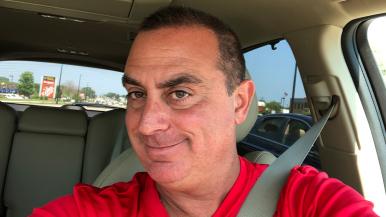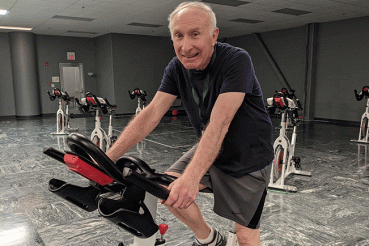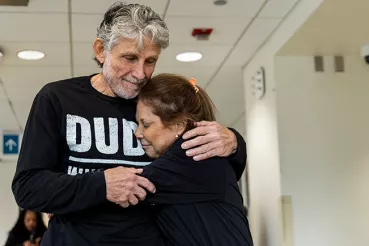Michael Passarelli was totally unaware he was having seizures. He was enjoying a full life as an active father of two sporty children, a regular golfer and a financial executive in the health care private equity space.
Then, in fall 2015, his loved ones started noticing that he would occasionally become lost staring off into space, unaware of what was happening around him.
Being 43, in good general health and with no history of seizures, Michael says at first he “didn’t think anything of it.”
But when one staring spell left him unresponsive during a card game, Michael’s family pointed it out to him and urged him to find out what was happening.
A surprising diagnosis
Michael was a longtime patient of Rush primary care physician Daniel Pohlman, MD, who ordered an MRI and electroencephalogram (EEG) to get more information when Michael told him about the staring spells.
When the results came back abnormal, Pohlman referred Michael to Rush neurologist Maggie McNulty, MD, part of the Rush Epilepsy Center team.
McNulty informed Michael that his clinical presentation and the EEG results showed his staring spells were, in fact, seizures that were most likely caused by a cavernous malformation in his temporal lobe. A cavernous malformation is an abnormally formed blood vessel, which can form in the brain and may result in a wide range of neurological symptoms, depending on the location.
Michael was stunned and concerned, but eager to get a handle on the problem.
Typically 60% to 70% of epilepsy patients are able to control their seizures with medication alone. McNulty started Michael on one anti-seizure medicine and advised him to make other lifestyle changes to see if there was improvement.
Medically intractable
Six months later, he was still having seizures. Although seizures in the temporal lobe related to cavernomas tend to be resistant to medications, McNulty prescribed a second seizure medicine to confirm whether this was the case for Michael.
When his seizures persisted, Michael’s condition was considered medically “intractable” — meaning reasonable doses of two medications failed to control seizures and additional medications were highly unlikely to help.
This left Michael with one potential treatment option. In June 2017, after overnight EEG monitoring confirmed that Michael’s cavernoma was causing the seizures, McNulty and Michael’s care team recommended evaluating whether he was a candidate for a surgical procedure called temporal lobectomy.
The importance of being educated
The surgery involves cutting a hole in the skull and removing the portion of the temporal lobe causing the seizures.
“When they told me what was involved, I nearly got out of bed and left!” Michael says.
To ease his concerns, his team provided him with literature about the procedure and — as they do with all of their patients — encouraged him to educate himself before making a decision.
Michael read everything he could get his hands on, and even called specialists at the Cleveland Clinic and other reputable hospitals to get additional opinions. When they all agreed with the assessment of his care team at Rush, Michael felt certain he was making the right decision.
“It was a turning point for me, because looking back on this, my fear subsided before the surgery,” he says. “And the reason was because I was educated.”
Life-changing surgery and a speedy recovery
On Nov. 22, 2017, Rush neurosurgeon Sepehr Sani, MD, performed the temporal lobectomy on Michael with no complications. By his own standards, Michael recovered “very, very quickly.”
At his three-week post-op appointment, his physicians were thrilled to see the pace of his recovery. They had predicted he’d bounce back quickly because he was educated and confident going in and, just as important, had the overwhelming support of his family, friends and local community.
Michael is quick to credit his physicians at Rush for his terrific outcome: “The team was phenomenal. I especially appreciated their team-based approach, bringing together a variety of experts to provide me with the best possible care.”
Within less than two months, Michael was back at work in nearly full capacity. Although he experienced some pain and issues with mood changes in the weeks and months after the surgery, getting back to normal made it all worth it.
By June 2018, EEGs confirmed he was no longer having seizures, and he was able to drive again. A year to the day after his surgery, Michael and friends showed their appreciation by bringing a large spread of food to share with the nurses and staff who had taken care of him.
It’s now been four years since his surgery, and Michael is thrilled to report that he remains seizure-free. While he has to take one anti-seizure medication for the rest of his life — to help ensure that other brain tissue affected by his past seizures will not cause new ones — he’s been able to once again live his life to the fullest.




